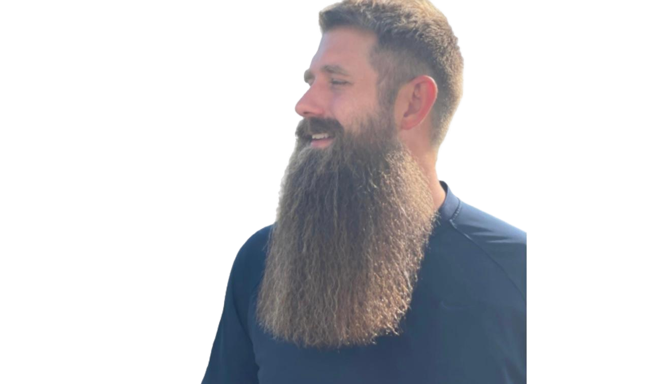How Seasonal Changes Impact Your Hair and Beard!

As the warm summer months come to a close and the crisp air of fall sets in, our hair and skin undergo several changes. These transitions can be particularly noticeable for those who sport facial hair. Just as our wardrobes change with the seasons, so do the care routines needed for our hair and beard. Seasonal shifts from summer to fall can have a significant impact on how your beard feels and how easy it is to style. Let’s dive into how the change in weather can affect your beard and skin, and what you can do to maintain a healthy and well-groomed appearance as fall approaches.
1. Dryness and Dehydration: The Fall Effect
One of the most common effects of transitioning from summer to fall is increased dryness. During summer, humidity often helps keep your hair and skin hydrated, but as the cooler, drier air of fall sets in, the moisture levels in the atmosphere drop. This can leave both your skin and your beard feeling dry and rough. Your beard may lose its natural shine, becoming more brittle and prone to breakage. Flaky, dry skin underneath your beard (often known as “beard dandruff” or “beardruff”) can also become more prominent as the air becomes less humid.
Solution:
To combat fall-induced dryness, consider incorporating a hydrating beard oil or balm into your routine. Oils rich in ingredients like jojoba, argan, or grapeseed can lock in moisture and prevent your beard hair from becoming brittle. A beard oil with natural, fall-inspired scents, such as grapefruit or citrus, can not only hydrate your beard but also leave a fresh and invigorating aroma as you step into the season.
2. Increased Irritation and Itchiness
As the weather cools and the air dries, your skin may react by becoming more sensitive. The lack of moisture in the environment can cause your skin to become irritated, leading to that familiar itchiness many bearded men experience. This itch can also be compounded by the added layers of clothing like scarves and turtlenecks rubbing against your beard, creating friction and further irritation.
Solution:
Using a gentle beard shampoo and conditioner, preferably one with all-natural ingredients like tea tree oil or aloe vera, can help soothe irritated skin. Also, don’t forget to regularly exfoliate to remove dead skin cells that could worsen itchiness and irritation.
3. Beard Growth and Shedding Patterns
Hair, including your beard, can undergo seasonal shedding. Just as animals experience changes in their coats with the seasons, many people notice that they lose more hair in the fall. You might see a bit more beard hair shedding than usual during this time, as your hair responds to the environmental changes.
Solution:
While some shedding is natural, excessive hair loss can be concerning. Make sure you’re getting enough nutrients like biotin, zinc, and omega-3 fatty acids, which support healthy hair growth. If shedding becomes more pronounced, a fall-specific beard care routine with strengthening oils and balms can help mitigate the impact.
4. Styling Challenges: Taming the Frizz
The drop in temperature combined with indoor heating can create a lot of static and frizz in your beard. Frizziness can make styling difficult, leaving your beard looking unruly and unkempt.
Solution:
Consider switching to a heavier beard balm or butter as you move into fall. These thicker products can provide better hold, while also smoothing down frizz and flyaways. Make sure to comb your beard regularly to distribute oils evenly and keep the hair lying flat. Additionally, if your beard tends to become overly frizzy, opt for a leave-in conditioner or detangler spray to maintain a well-groomed look.
5. Protection from Harsh Winds
As fall progresses, harsh winds and cooler temperatures can leave your beard feeling stiff and rough. The cold air can strip away natural oils, leading to a lackluster, dull-looking beard.
Solution:
To shield your beard from the elements, opt for a beard balm or wax that acts as a barrier against wind damage. These products can seal in moisture and protect your beard from the harsh elements of fall. Regular trims will also help keep your beard healthy by removing split ends and preventing further damage.
6. Adapting to New Styling Trends
With every season comes new styling trends, and fall is the perfect time to experiment with a fuller, more rugged beard. As the temperatures drop, growing out a thicker beard can offer both style and warmth. Fall is also the season to experiment with beard styles that match the cozy, layered fashion trends of the time.
Solution:
As your beard grows thicker, maintenance becomes more important. Make sure to invest in a good quality beard comb and trimmer to keep everything in shape. Whether you’re going for a polished look or a more natural, rustic appearance, consistency in grooming is key to maintaining your desired style.
In Conclusion
The seasonal change from summer to fall can impact both the feel and styling of your beard. With a little extra care and attention, you can keep your beard looking healthy, hydrated, and stylish throughout the cooler months. Embrace the transition by adjusting your beard care routine to tackle the dryness, shedding, and frizz that fall brings, and let your beard thrive in this new season.
Dan C
Master of Marketing
Doctor Nick's Amazing Man Stuff

